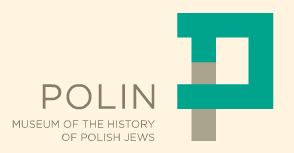 Written and narrated by Peter Bejger.
Written and narrated by Peter Bejger.
How do you tell a story?
Museums are essential places where stories about nations and cultures are told. But they are also places where the story may not fully told. Or the story may need to be retold.
There has been a global boom in new museums. There are new technologies, and new ways to tell a story, especially with interactive multi-media formats. Museum visitors are no longer just passive consumers of information.
This museum boom is now reaching Eastern Europe. And fresh ideas about museums are facing new challenges in rapidly changing societies in that region. History, and re-thinking history, and re-telling history, is complicated in post-communist societies. Controversial. And often painful.
Recently the Center for Urban History of East Central Europe in Lviv tackled the issues of museums telling, or not telling, the story. What are the challenges that Ukrainian museums face when including Jewish history into the dominant narrative of their exhibitions?
A public program called “Jewish Days in the City Hall: (Un)Displayed Past in East European Museums” featured researchers and museum experts from Ukraine, Poland, Israel, Russia, and the U.S. The focus was on emerging trends in museum practices. A crucial point discussed was how to create inclusive narratives on societies with a multicultural heritage.
Examples were drawn from the stories Jewish museums in Eastern Europe are now telling us.
One compelling example was provided by Marcin Wodziński. He is a historian and Professor of Jewish Studies at the University of Wroclaw in western Poland. His special fields of interest are Jewish material culture and the social history of Jews in nineteenth-century Eastern Europe.
Wodzinski’s lecture focused on the Museum of the History of Polish Jews opened in Warsaw in 2014. He explained how guiding principles and considerations of history shaped the Museum. He outlined how the museum emerged from public debates on the Jews and Polish-Jewish relations, both academic and popular. All this has direct relevance to Ukrainian museums now grappling with similar challenges.
Wodzinksi noted the proposed museum started with the advantage of having no collection. But it started with a story. A powerful story. And the story was to be a museum of Jewish life, and not a memorial to a gravesite. He pointed out the museum avoided a lachrymose approach, where Jewish history is presented as only that of victims. The Jewish story is not only of suffering.
The museum consulted with historians and specialists for year to develop the story it wanted to tell before opening. A thousand years of Polish Jewish history was divided into chapters. Museum space was parceled out to these chapters and reflected in structured galleries of exhibits. There is a narration of events guided by documents of the time. But the story told is in the voice of historians in the 21st century.
Wodzinski noted that a museum does not have to be based on objects of display. A story does not come from objects. But historical artefacts bring to a museum an essential feeling of authenticity. The trick is to integrate artefacts effectively into museum space.
One of the most challenging issues for the museum was dealing with the slippery and often changing meaning of identity. Polish Jews, like Ukrainian Jews, lived among non-Jews who were often divided for long periods by different empires, states, and ruling languages. A so-called “Polish Jew” living in Berlin was identified as such because he might be wearing “traditional” Jewish dress. Just as a so-called “German Jew” in the once Austrian imperial city of Lemberg, now Lviv, was called that because we wore contemporary urban clothing.
The problem of identification is complex and it is difficult to categorize.
Finding answers is not easy. Wodzinski was asked what advice he would offer to those creating a future Museum of Ukrainian Jews. He said you would be criticized for whatever you choose. But he stressed that what the Polish museum was trying to get done was not choosing the least controversial approach. On the contrary, they are showing the problem of definition.
Wodzinski underlined that there are difficult choices, but they are all the more fascinating to study and present. People are not made by one choice, he reminded us. People break identities, refrain from an identity, and change identities. For this very reason Wodzinski believes a museum of Ukrainian Jews could be fascinating story.
From all this we can conclude, as Wodzinski’s lecture at the Center for Urban History stated, that modern museums are “mirrors carried along the high road.” And just like novels, they reflect the ways contemporary individuals and societies see themselves and how they portray each other. And as times change, the mirror changes. As do those who look into the mirror to see themselves.
This has been Ukrainian Jewish Heritage on Nash Holos Ukrainian Roots Radio. From San Francisco, I’m Peter Bejger. Until next time, shalom!

